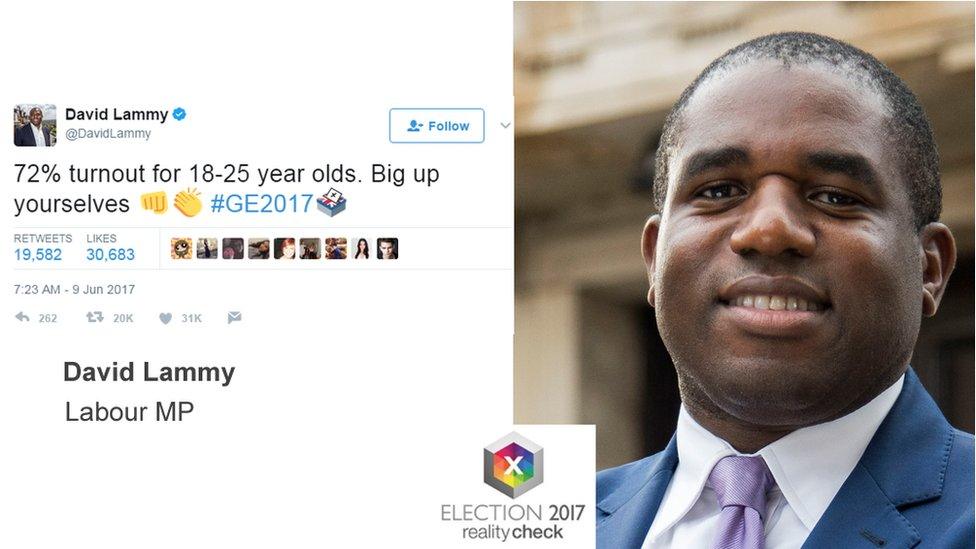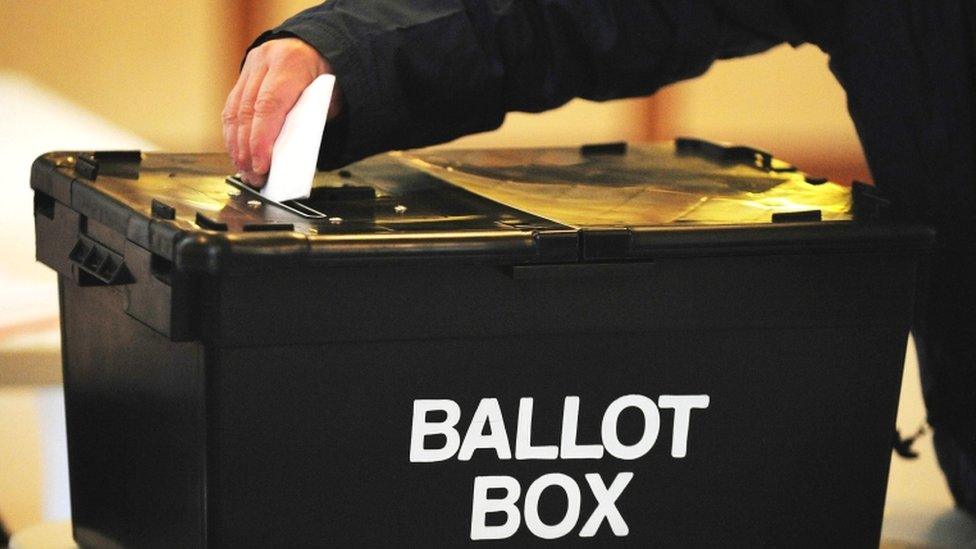Reality Check: Has there been a surge in youth turnout?
- Published

The claim: Turnout surged among young voters - some are saying to 72% - which boosted Labour's performance in the election.
Reality Check verdict: We do not yet have any reliable figures for turnout by different age groups. While it is true that seats with the highest proportions of 18 to 24-year-olds had above average swings to Labour, there are plenty of seats with big swings to Labour and low proportions of young people.
The anecdotes began to roll in shortly after the polls closed: in places where the young had not voted for years they were turning out in force, queuing down the street for their chance to vote.
A figure of 72% turnout for 18 to 24-year-olds has been doing the rounds, including in a tweet, external from Labour MP David Lammy, but there has been much doubt about its origin., external
BBC Trending has spoken to Alex Cairns, who seems to have been the first person to tweet, external this. It was later tweeted, external by the president of the National Union of Students.
Mr Cairns stressed that the figure was "an indication" and was based on conversations with student union presidents and his own research, but did not show us his calculations.
A 72% turnout for that age group would be remarkable given that Ipsos Mori, external estimated that only 43% of that age group voted in 2010 and 44% in 2015, but as yet we have no evidence that happened.
The overall turnout was 68.7%, the highest since 1997.
Is there actual evidence for a surge in youth turnout?
The general election is obviously a secret ballot, so we don't find out how different age groups voted from there.
The exit poll, which did an excellent job of predicting the outcome of the election, did not ask any questions other than how people voted (it used to, but doesn't any more).
Ipsos Mori is carrying out research, external, which will come up with estimates for the turnout broken down by age group, but that won't be published until next week.
So, what can we say now about voting patterns among young people?
We could look at voter registration among young people, external, which is indeed high, but you'd expect it to be because it includes people registering to vote for the first time and people moving house, which young people are more likely to do.
While we don't have figures for turnout broken down by age groups, we do know which constituencies have the highest proportions of young people living in them.
It is true to say that there has been an increase in turnout in constituencies with the largest numbers of young people, but not significantly greater than the increase in turnout in constituencies in general.
The only five constituencies where the turnout increased by more than 10 percentage points were Hackney North, Hackney South and Ilford South in south-east England, and South Down and Foyle in Northern Ireland, all of which have pretty average populations between 18 and 24.
If you look at a breakdown of the Labour vote, constituencies with the highest proportions of young people did indeed see relatively large increases in their Labour votes.
The 10 constituencies with the highest proportions of 18 to 24-year-olds posted increases in the Labour vote of more than 14%.
The biggest swing to Labour was in Bristol West where it grew 30% - it has the eighth highest proportion of 18 to 24 year olds in the country - it's the home of Bristol University.
Prof John Curtice points out that in England and Wales there was a 2.5% swing to Labour in seats where fewer than 7% of the population is aged 18 to 24. In seats where at least one in 10 people is of that age, there was a swing of 5%.
But if you look at all 91 constituencies where the Labour vote increased by more than 14%, the proportion of 18 to 24 year olds is only slightly above average (about 12%, when the average is about 9%).
If you look at the 35 Labour gains, only 15 of them had more 18 to 24 year olds than average.
This analysis is based on figures when one result still had not been declared.
Overall turnout
Please enable Javascript to view our results map



- Published9 June 2017

- Published9 June 2017

- Published19 May 2017
